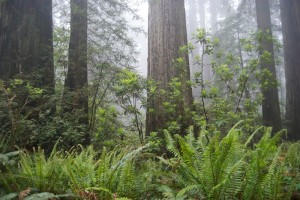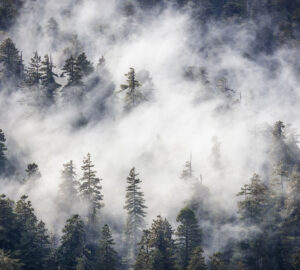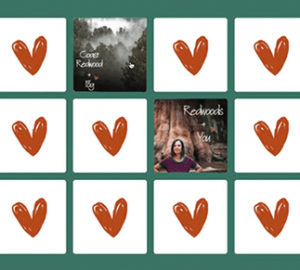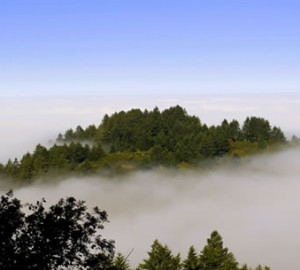
The new issue of Bay Nature has an article on the fantastic and ephemeral feature of our local climate — fog. The article, Demystifying Mist, describes the science of studying fog and conjures up images of misty forest days that are so familiar to me. Watching fog roll into the redwood forest and drip on the forest floor is an incredibly beautiful sight.
Many naturalists and scientists before me have mused over how important fog is for the coastal ecosystems of California. One of my favorite early papers on fog in California was written by G.T. Oberlander in 1956. He describes placing five simple bucket fog-drip collectors under the crowns of coast redwood, tanoak, Douglas fir trees on Cahill Ridge (San Francisco Peninsula) during July 1951. He measured how much fog dripped downwards from the tree branches and leaves into his collectors below. He found that the tanoak tree in his study dripped the most fog, partly because this tree stood in a place with significant exposure to fog drifting by. Oberlander used a method of catching fog that researchers like myself still use today.




